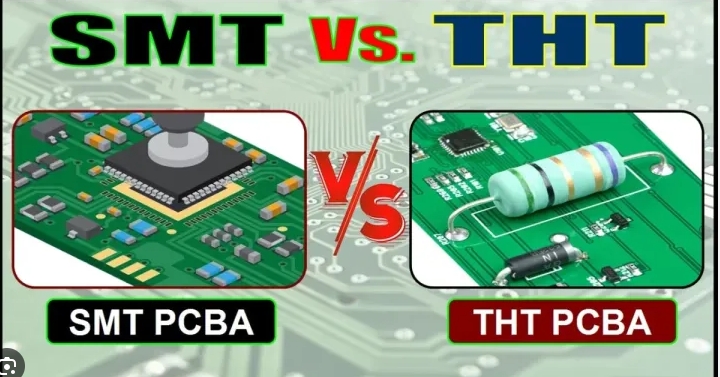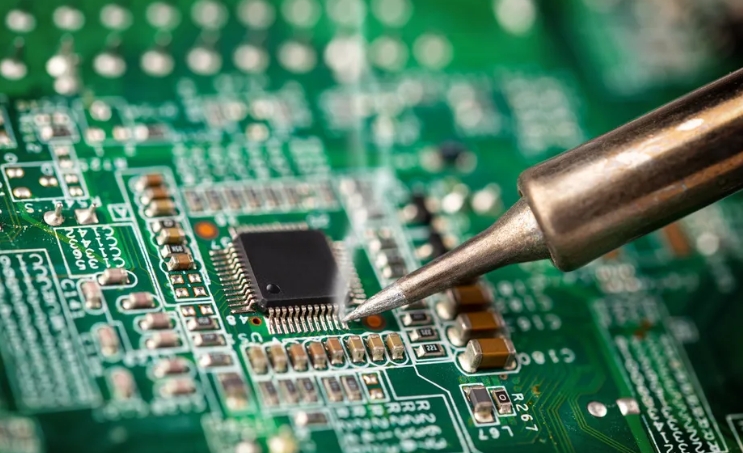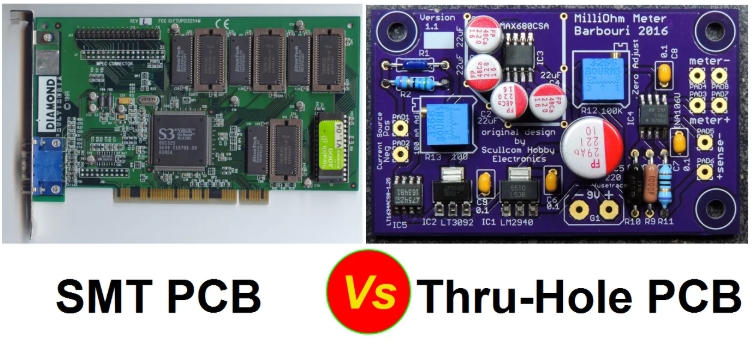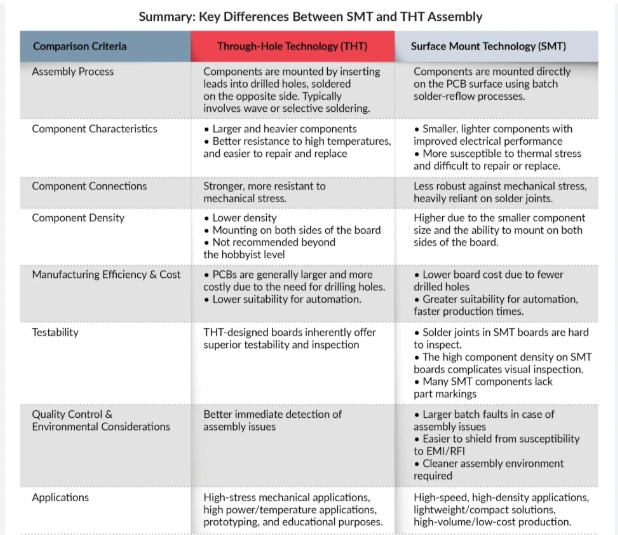When it comes to PCB assembly, one of the first decisions you'll face is choosing between Through-Hole Technology (THT) and Surface Mount Technology (SMT). Both methods have their strengths and weaknesses, and the right choice depends on your project's specific needs. If you're wondering about THT vs SMT cost, THT vs SMT reliability, or THT vs SMT component density, this guide will break it down for you. In short, SMT often offers lower costs and higher component density for modern, compact designs, while THT provides superior reliability for projects requiring durability under stress. Let's dive deeper into these differences to help you make an informed decision for your next project.
What Are THT and SMT? Understanding the Basics
Before comparing the two methods, it's important to understand what THT and SMT are and how they work in PCB assembly. These technologies refer to the way electronic components are mounted onto a printed circuit board (PCB).
Through-Hole Technology (THT) is a traditional method where component leads are inserted into pre-drilled holes on the PCB and soldered on the opposite side. This technique has been used for decades and is known for creating strong mechanical bonds between components and the board.
Surface Mount Technology (SMT), on the other hand, involves mounting components directly onto the surface of the PCB without drilling holes. Components are placed using automated machines and soldered via a reflow process. SMT is the dominant method in modern electronics due to its efficiency and suitability for smaller, high-density designs.

Key Factors in Choosing Between THT and SMT
Selecting the right assembly method involves evaluating several factors based on your project's requirements. Below, we explore the critical aspects of THT vs SMT cost, THT vs SMT reliability, and THT vs SMT component density, along with other considerations like assembly speed and application suitability.
1. THT vs SMT Cost: Which Is More Economical?
Cost is often a deciding factor in any project, and the choice between THT and SMT can significantly impact your budget. Here's how they compare:
- THT Cost: THT assembly tends to be more expensive, especially for large-scale production. The process requires drilling holes into the PCB, which adds to manufacturing time and cost. Additionally, THT often involves manual soldering for certain components, increasing labor expenses. For small runs or prototypes, costs can range from $5 to $10 per board due to setup and manual work.
- SMT Cost: SMT is generally more cost-effective, particularly for high-volume production. The process is highly automated, using pick-and-place machines that can place thousands of components per hour, reducing labor costs. SMT also eliminates the need for drilling, lowering PCB fabrication costs. For mass production, SMT can bring per-board costs down to $1 to $3, depending on complexity.
For projects with tight budgets and high production volumes, SMT is usually the better choice. However, for low-volume or specialized projects where durability is critical, the higher cost of THT might be justified.
Suggested Image Placement: Include a chart or infographic here comparing the cost breakdown of THT and SMT assembly for different production volumes. ALT Text: "Cost comparison chart of THT vs SMT PCB assembly for various production scales."
2. THT vs SMT Reliability: Which Is More Durable?
Reliability is crucial, especially for applications where PCBs will face harsh conditions like vibration, high temperatures, or mechanical stress. Let's look at how THT and SMT stack up in terms of THT vs SMT reliability.
- THT Reliability: THT components are known for their robust mechanical strength. Since the leads pass through the board and are soldered on the other side, they form a strong physical connection that can withstand significant stress. This makes THT ideal for military, aerospace, and industrial applications where reliability is non-negotiable. For example, in environments with vibrations up to 10G, THT connections are less likely to fail compared to surface-mounted ones.
- SMT Reliability: SMT components, while reliable for most consumer electronics, are more susceptible to failure under mechanical stress or thermal cycling. The solder joints are smaller and can crack if exposed to repeated stress or high temperatures (e.g., above 125°C). However, advancements in soldering techniques and materials have improved SMT reliability over the years, making it suitable for many applications with proper design considerations.
If your project involves extreme conditions or requires long-term durability, THT is often the safer bet. For standard consumer electronics like smartphones or IoT devices, SMT provides adequate reliability at a lower cost.

3. THT vs SMT Component Density: Packing More into Less Space
Component density refers to how many components you can fit onto a given area of the PCB. This is a critical factor for modern electronics, where miniaturization is often a priority. Here's how THT and SMT compare in THT vs SMT component density.
- THT Component Density: THT has a lower component density because the drilled holes and larger component sizes take up more space. Additionally, components can only be mounted on one side of the board in most cases, limiting the number of parts per square inch. A typical THT board might accommodate 10-20 components per square inch, depending on the design.
- SMT Component Density: SMT allows for much higher component density, as components are smaller and can be mounted on both sides of the PCB. This is why SMT is the go-to choice for compact devices like smartphones, wearables, and IoT gadgets. SMT designs can achieve densities of 50-100 components per square inch, making it ideal for high-density interconnect (HDI) boards.
For projects requiring compact designs or complex circuitry in a small footprint, SMT is the clear winner. If space constraints are not an issue, THT can still be a viable option, especially for simpler designs.

4. Assembly Speed and Automation
The speed of assembly can impact project timelines, especially for large-scale production. SMT has a significant advantage in this area due to its compatibility with automated processes.
- THT Assembly Speed: THT assembly is slower because it often requires manual insertion of components and soldering. Even with automated insertion machines for some components, the overall process is less efficient. A typical THT assembly line might process 500-1,000 boards per day.
- SMT Assembly Speed: SMT assembly is much faster thanks to automated pick-and-place machines that can handle up to 200,000 components per hour. This high-speed automation allows SMT lines to produce thousands of boards per day, making it ideal for mass production.
If time-to-market is a priority, SMT offers a clear edge. For smaller runs or custom projects where speed is less critical, THT can still work effectively.
5. Application Suitability
The type of project you're working on plays a big role in determining whether THT or SMT is the better choice. Here are some examples of applications suited to each method:
- THT Applications: Best for power electronics, transformers, connectors, and other large components that require strong mechanical bonding. Common in industrial equipment, automotive systems, and military hardware.
- SMT Applications: Ideal for consumer electronics, mobile devices, and compact gadgets. SMT is widely used in products where size, weight, and cost are critical factors.
Some projects may even benefit from a hybrid approach, combining THT for high-stress components and SMT for high-density areas on the same board.
Pros and Cons of THT and SMT
To help you weigh your options, here's a quick summary of the advantages and disadvantages of each method:
Through-Hole Technology (THT)
- Pros:
- High reliability and durability under stress.
- Strong mechanical bonds for heavy components.
- Easier to prototype and rework manually.
- Cons:
- Higher cost, especially for large-scale production.
- Lower component density, leading to larger boards.
- Slower assembly process due to manual labor.
Surface Mount Technology (SMT)
- Pros:
- Lower cost for high-volume production.
- Higher component density for compact designs.
- Faster assembly with automated processes.
- Cons:
- Less reliable under extreme mechanical or thermal stress.
- Harder to rework or repair manually.
- Requires precise design and manufacturing for optimal results.

How to Decide: A Step-by-Step Guide
Choosing between THT and SMT doesn't have to be complicated. Follow these steps to determine the best method for your project:
- Assess Your Budget: If cost is a major concern and you're producing in high volumes, lean toward SMT. For smaller runs where durability matters more, consider THT.
- Evaluate Space Constraints: If your design requires a compact board with many components, SMT is the better option. For larger, simpler boards, THT can work well.
- Consider Environmental Factors: If your PCB will face harsh conditions like high vibration or extreme temperatures, THT offers better reliability. For standard conditions, SMT should suffice.
- Think About Production Scale: For mass production, SMT's automation saves time and money. For prototypes or low-volume runs, THT might be more practical due to easier manual handling.
- Consult with Experts: Partner with a trusted PCB assembly provider to get tailored advice based on your specific design and requirements.
Conclusion: Making the Right Choice for Your PCB Assembly
Deciding between THT and SMT comes down to understanding your project's unique needs. If you're focused on THT vs SMT cost, SMT often wins with its lower production expenses and automation. For THT vs SMT reliability, THT is the go-to for durability in demanding environments. When it comes to THT vs SMT component density, SMT allows for more compact and complex designs.
At ALLPCB, we’re committed to helping you navigate these choices with expert guidance and high-quality assembly services. Whether you opt for THT, SMT, or a hybrid approach, our team is ready to support your project from design to delivery. By weighing the factors discussed in this guide, you can confidently select the PCB assembly method that ensures success for your next innovation.
Suggested Image Placement: Add a final image here showing a completed PCB project, highlighting both THT and SMT components if possible. ALT Text: "Completed PCB project showcasing THT and SMT assembly methods."
 ALLPCB
ALLPCB







